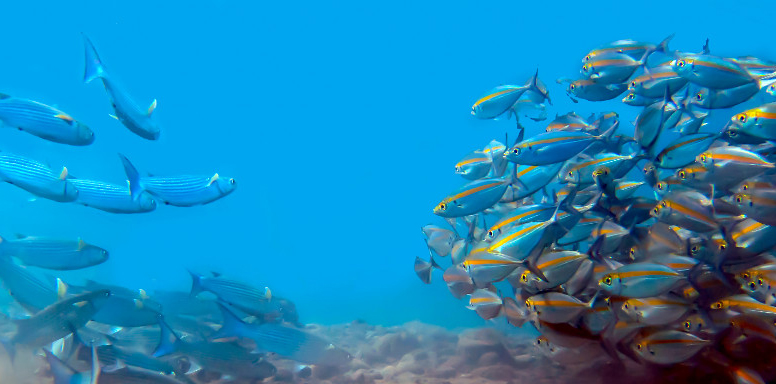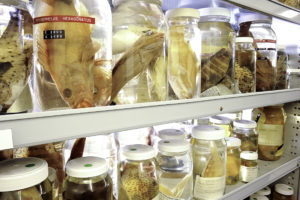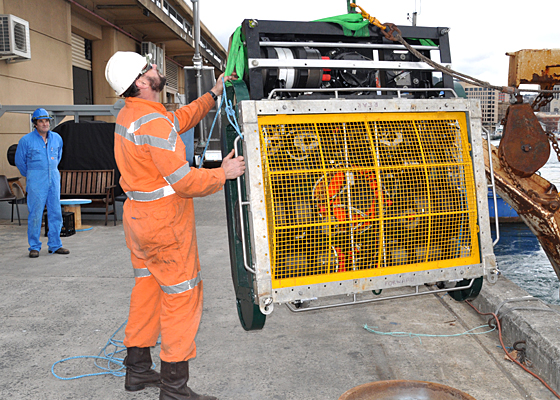
Australian waters are home to a dizzying variety of fish – some 5000 species. Many – estimates range as high as 80 per cent – of the marine species found in southern Australian waters occur nowhere else. That’s a pretty impressive natural endowment, and one that needs to be maintained, for the good of ecosystems, the marine food chain, the human food chain and the economy. But even as we depend on the oceans for so much, we’re putting considerable pressure on them.
Australia’s fishing zone is the world’s third largest, and the $2.4 billion commercial fishing and aquaculture industry employs over 11,000 people. CSIRO research helps keep the industry and the marine ecosystem sustainable. An independent study has indicated that the annual long-term economic impact of CSIRO’s research is more than $400 million, including healthier marine ecosystems; secured commercial catch volume; and recreational fisheries benefits.
As yet, we know surprisingly little about what goes on in Australian waters. Our marine estate remains largely unexplored, and less than 10 per cent of our marine species have been identified. Despite this, we need to find ways to sustainably share our ocean’s wealth for the benefit of all Australians. We have to balance multiple uses and conservation through research, planning, management and cooperation.
CSIRO’s Ocean and Atmosphere Flagship is at the forefront of this effort. With many researchers based at CSIRO’s Marine laboratories in Hobart, which celebrates its 30th anniversary this month, CSIRO’s fisheries research dates back nearly 80 years, to the original Fisheries Investigation Section founded in 1936.
They know fish

CSIRO undertook the foundational work of identifying, collecting and cataloguing fish species, culminating in the development of the Australian National Fish Collection. With around 150,000 specimens, it’s an invaluable repository of fisheries information, and a record of biodiversity in the 20th and 21st centuries. This is increasingly important in helping to quantify and analyse the effects of climate change, commercial fishing and habitat destruction.
In some cases, CSIRO fisheries research work has helped to overcome and begin to reverse the effects of these pressures. Only 10 years ago, 29 per cent of Australia’s commercial species were overfished or vulnerable to overfishing. It was CSIRO research that underpinned the development of Australia’s sustainable harvest strategy policy. This has secured the long-term future of the Australian fishing industry and improved the health of marine ecosystems. Fish stocks are rebounding at an impressive five per cent a year.
Southern Bluefin Tuna
One species in need of assistance was the Southern Bluefin Tuna. CSIRO scientists were engaged with the international team that developed the management procedure that was used to set a global quota in 2012. This was a first for an international tuna fishery.
CSIRO scientists also are tagging and releasing juvenile Southern Bluefin Tuna. Data from retrieved tags will contribute to a much larger tagging dataset, spanning 30 years and will be used to investigate their feeding, diving, migratory behaviour and habitats.
(They recently had a tag returned from a 22 year old, 102kg whopper)
A close-kin tag and recapture system for estimating the numbers of spawning Southern Bluefin Tuna uses genomic data from parent/offspring pairs to monitor the species’ resilience and viability. This system has now been extended for use on the Great White Shark and the Estuary Stingray, native to southern Queensland and northern NSW rivers.
New technology to monitor fish stocks

Some impressive science has also gone into other research. There’s an acoustic tool for monitoring mid-water species, effectively sounding out how much food is in the ocean. Working with a commercial fishing partner, CSIRO modified an existing design for an acoustic and optical research system into a robust, industrial instrumentation package that can be used on commercial fishing boats to count fish stocks under normal operating conditions.
The instrument is mounted on the headline of trawl nets and uses a combination of echo-sounding technology and video and still cameras. Having this sort of equipment on commercial fishing boats eliminates the need for dedicated research vessels and personnel, reducing the cost and complexity of surveying fisheries.
As well as guiding catch numbers by providing accessible and timely information on the size of fish stocks, this technology allows commercial fishing operations to monitor their compliance to fishing limits, ensuring the sustainability of the fishery.
Modelling marine ecosystems
One crucial aspect of CSIRO’s fisheries research has been to view fisheries management on an ecosystem basis, rather than concentrating on a single element – generally a commercially-valuable species. The ecosystem-based perspective takes into account that every component of an ecosystem has a value and a niche, and that unbalancing it can have dire unintended consequences.
Encompassing whole-of-ecosystem and whole-of-science approaches to fisheries management, a new tool, the Atlantis ecosystem model, simulates the marine environment and the human activities that contribute to, affect or detract from it. Managers can ‘try before they buy’, and harmlessly experiment with strategies for balancing resource use and conservation.
The model incorporates oceanography, chemistry and biology, and simulates ecological processes such as consumption, migration, predation and mortality. The United Nations rated Atlantis as the best ecosystem model in the world, and regional versions are being used in management strategy evaluation for more than 30 ecosystems around the world.
As the effects of warming oceans begin to make them begin to make themselves felt, the ability to recalibrate the model with new data will be vital to making far-reaching decisions that can no longer be based on the old certainties.
With a track record like that, they’ve earned the right to work in this enviable setting:
